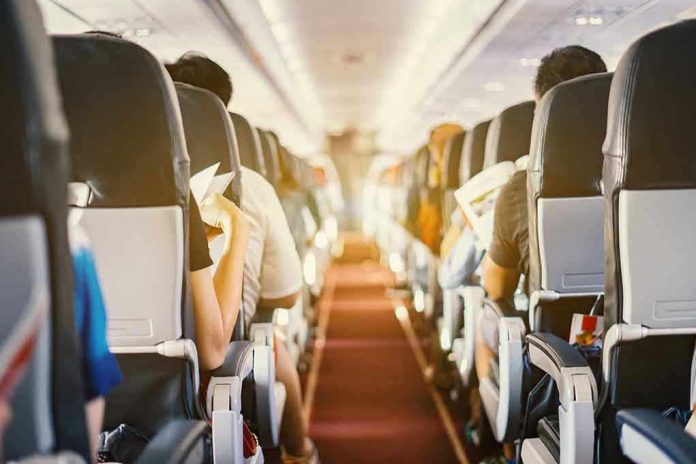
The FAA has issued a critical directive to airlines after multiple 2025 emergency evacuations revealed passengers are endangering lives by retrieving carry-on luggage, transforming life-saving procedures into deadly delays.
Story Snapshot
- FAA mandates airlines strengthen evacuation procedures after passengers repeatedly ignored safety protocols in 2025 emergencies
- Three major incidents involved nearly 800 passengers, with many grabbing carry-ons during evacuations at Orlando, San Diego, and Denver airports
- Passengers retrieving luggage during evacuations risk damaging emergency slides and creating fatal bottlenecks in escape routes
- Airlines must now implement enhanced crew training and passenger education campaigns focusing on leaving belongings behind
Pattern of Dangerous Passenger Behavior Emerges
The FAA’s September 2025 directive responds directly to alarming passenger behavior witnessed during three major emergency evacuations. In April, 300 passengers evacuated a Delta flight at Orlando International Airport following an engine fire. May brought a Hawaiian Airlines bomb threat diversion to San Diego requiring evacuation of nearly 300 passengers. July’s American Airlines Flight 3023 evacuation at Denver International Airport involved 173 passengers and six crew members fleeing fire and smoke conditions.
During these incidents, passengers consistently ignored crew instructions and retrieved carry-on items before evacuating. This behavior directly contradicts decades-established emergency protocols designed to ensure rapid aircraft egress within the critical 90-second evacuation window required by federal certification standards.
FAA Implements Comprehensive Safety Overhaul
Airlines must now review and strengthen their Safety Management Systems to specifically address carry-on retrieval risks during emergencies. The directive emphasizes “clear and concise” passenger instructions and mandates enhanced crew training programs. Airlines are also encouraged to launch comprehensive outreach and education campaigns targeting passenger behavior modification before emergencies occur.
The FAA’s approach recognizes that traditional safety briefings have failed to prevent this dangerous behavior. Modern passengers often carry valuable electronics, medications, and personal items in increasingly larger carry-on bags, creating stronger psychological incentives to retrieve belongings despite mortal danger. This regulatory response demonstrates the agency’s commitment to proactive safety measures rather than reactive accident investigation.
Life-Threatening Consequences of Luggage Retrieval
Aviation safety experts have documented how retrieving carry-ons during evacuations creates multiple fatal hazards. Sharp objects in luggage can puncture emergency slides, rendering them unusable for subsequent passengers. Passengers fumbling with overhead bins create dangerous bottlenecks in narrow aisles, preventing others from reaching exits. Even seconds of delay can prove fatal during fire or smoke emergencies when toxic fumes rapidly fill aircraft cabins.
Aircraft evacuation certification requires all passengers to exit within 90 seconds using only half the available exits. This standard assumes passengers follow instructions and leave belongings behind. When passengers retrieve carry-ons, they compromise this carefully engineered safety margin, potentially turning survivable emergencies into fatal disasters. The FAA’s intervention addresses this growing threat to aviation safety through both regulatory authority and public education initiatives.
Sources:
Airlines told to reevaluate emergency evacuation procedures after carry-on concerns
FAA tells airlines to strengthen evacuation procedure so travelers don’t bring their carry-ons
FAA: Passengers evacuating with carry-on items, putting lives at risk







